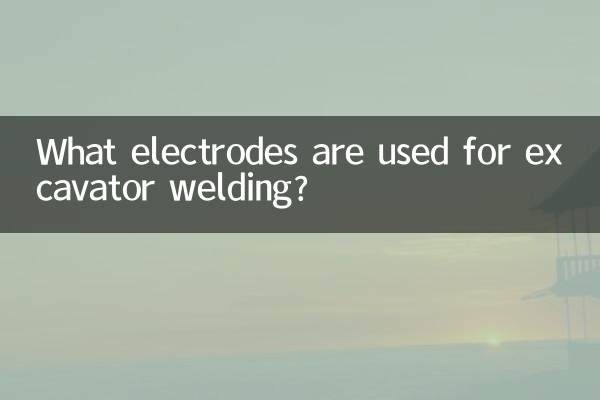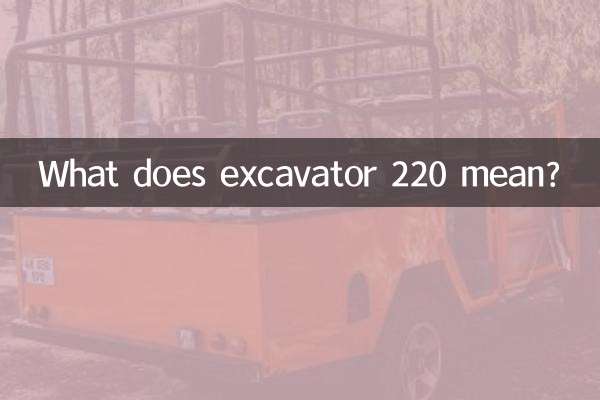What electrodes are used for excavator welding?
In the field of construction machinery maintenance and manufacturing, excavator welding is a common and important technical link. Choosing the right welding rod is not only related to the welding quality, but also directly affects the service life and safety of the excavator. This article will combine the hot topics and hot content on the Internet in the past 10 days to give you a detailed introduction to the selection of welding rods for excavator welding, and provide structured data for reference.
1. Common materials for excavator welding

The welded parts of the excavator usually include the bucket, arm, chassis, etc. The materials of these parts are mostly high-strength steel or wear-resistant steel. Therefore, the choice of welding rod needs to be based on the specific material. The following are common excavator welding materials and their corresponding electrode types:
| Material type | Recommended welding rod | Applicable parts |
|---|---|---|
| high carbon steel | J507, J506 | Boom, chassis |
| wear-resistant steel | D256, D266 | Bucket, tooth plate |
| low alloy steel | J422, J427 | Connectors, small parts |
2. Things to note when choosing welding rods
1.Welding environment: If the welding environment has high humidity, it is recommended to use low-hydrogen welding rods (such as J507) to reduce the risk of hydrogen-induced cracking.
2.Welding process: For manual arc welding, the diameter of the welding rod should be selected according to the welding thickness. For example, when the welding thickness is 4-8mm, you can choose a Φ3.2mm electrode.
3.Welding rod storage: Welding rods should be stored in a dry and ventilated environment and must be dried before use to avoid welding defects caused by moisture.
3. Analysis of hot topics on the entire network
After combing through hot topics on the Internet in the past 10 days, we found that the following content related to excavator welding has attracted much attention:
| hot topics | focus of discussion | heat index |
|---|---|---|
| Excavator Bucket Repair | Selection of wear-resistant welding rods | ★★★★☆ |
| High strength steel welding technology | Welding rod matches base metal | ★★★☆☆ |
| Welding crack prevention | Applications of low hydrogen welding rods | ★★★★☆ |
4. Recommended welding rod brands
There are many brands of welding rods on the market. Here are a few products that perform well in excavator welding:
| brand | Model | Features |
|---|---|---|
| Jinqiao welding materials | J507 | Low hydrogen type, good crack resistance |
| atlantic welding consumables | D256 | Strong wear resistance, suitable for bucket repair |
| Lincoln welding consumables | J422 | Strong versatility and easy operation |
5. Treatment after welding
After welding is completed, the following processing is required to ensure welding quality:
1.Weld seam cleaning: Remove welding slag and spatter, and check whether the appearance of the weld is uniform.
2.stress relief: For important parts, it is recommended to perform annealing treatment to eliminate welding stress.
3.Non-destructive testing: Carry out ultrasonic or X-ray inspection if necessary to ensure there are no defects inside the weld.
Summary
The selection of welding rods for excavator welding needs to be comprehensively considered based on material type, welding environment and process requirements. The structured data and suggestions provided in this article hope to help you make more scientific choices in excavator welding. If you have more questions, please leave a message for discussion!

check the details

check the details